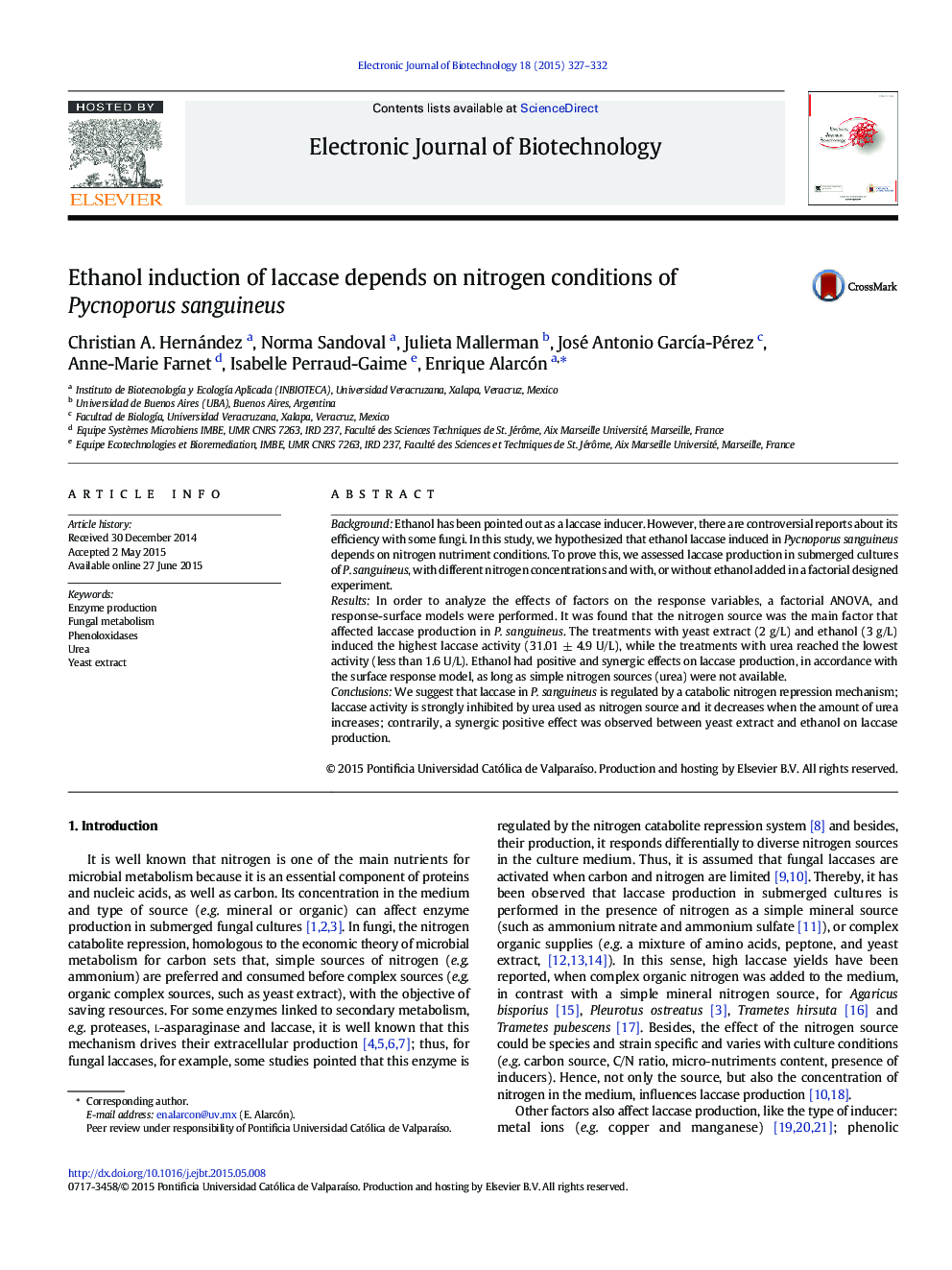| Article ID | Journal | Published Year | Pages | File Type |
|---|---|---|---|---|
| 200800 | Electronic Journal of Biotechnology | 2015 | 6 Pages |
BackgroundEthanol has been pointed out as a laccase inducer. However, there are controversial reports about its efficiency with some fungi. In this study, we hypothesized that ethanol laccase induced in Pycnoporus sanguineus depends on nitrogen nutriment conditions. To prove this, we assessed laccase production in submerged cultures of P. sanguineus, with different nitrogen concentrations and with, or without ethanol added in a factorial designed experiment.ResultsIn order to analyze the effects of factors on the response variables, a factorial ANOVA, and response-surface models were performed. It was found that the nitrogen source was the main factor that affected laccase production in P. sanguineus. The treatments with yeast extract (2 g/L) and ethanol (3 g/L) induced the highest laccase activity (31.01 ± 4.9 U/L), while the treatments with urea reached the lowest activity (less than 1.6 U/L). Ethanol had positive and synergic effects on laccase production, in accordance with the surface response model, as long as simple nitrogen sources (urea) were not available.ConclusionsWe suggest that laccase in P. sanguineus is regulated by a catabolic nitrogen repression mechanism; laccase activity is strongly inhibited by urea used as nitrogen source and it decreases when the amount of urea increases; contrarily, a synergic positive effect was observed between yeast extract and ethanol on laccase production.
